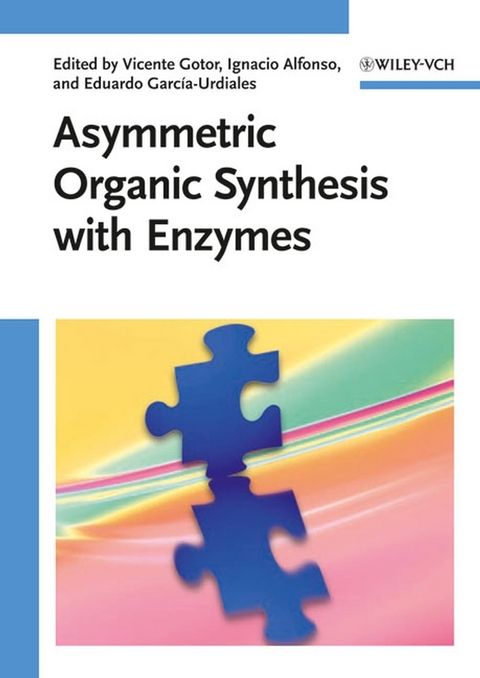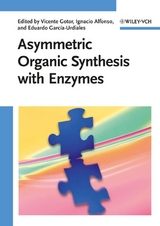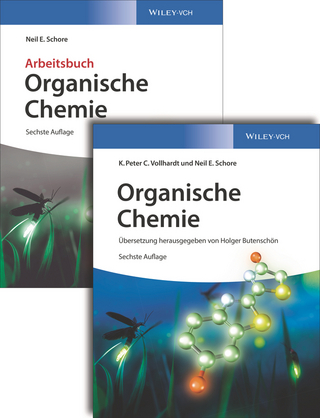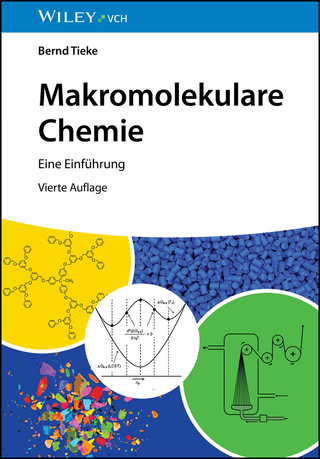Asymmetric Organic Synthesis with Enzymes
Wiley-VCH (Verlag)
978-3-527-31825-4 (ISBN)
- Titel ist leider vergriffen;
keine Neuauflage - Artikel merken
Covers all important reactions, including C-C coupling reactions, oxidation reactions and many more
New trends for the optimization of enzymatic catalysts e.g.
Perfect for biochemists, synthetic and organic chemists, this book covers all important reactions, including C-C coupling reactions, oxidation reactions and many more.Divided into two parts, the first section on methodology presents new innovative methods for enzymatic catalysis optimization, including such new trends as medium engineering, directed evolution and computer-aided prediction of enantioselectivity. The second and main section deals with applications to synthesis, showing important reaction types and their applications. Only those reactions with very high selectivity are presented, allowing readers to improve their own reaction yields.
Vicente Gotor assumed his current position as Professor of Organic Chemistry at the University of Oviedo in 1982. His research fields include the areas of Heterocyclic and Bioorganic Chemistry. Specific areas of his research interest are enzymatic amidation reactions with hydrolases, enzymatic chemoselective transformations on natural products, biotransformations with oxynitrilases and oxidoreductases, and chiral recognition with azamacrocycles. He was Vice-chancellor of Research of Oviedo University for four years until June 2000. At present, he is the leader of Bioorganic group in the Chemistry Faculty of Oviedo University and Head of Department of Organic and Inorganic Chemistry. He has published more of 240 papers, is director of 40 Doctoral Thesis and coauthor of 10 patents. Ignacio Alfonso completed his PhD in 1999 at the University of Oviedo, obtaining the PhD extraordinary award. During his doctoral studies, he spent a short period of time at the University of Strasbourg working under the supervision of Profs. Bernard Dietrich and Nobel Prize Winner Jean-Marie Lehn. After finishing his PhD, he moved to The Scripps Research Institute in La Jolla, California, as a postdoctoral fellow with Prof. M. Reza Ghadiri. Since 2004, he is researcher at the University Jaume I in Castellón, Spain. His research interests are bioorganic and supramolecular chemistry, biosensing, molecular recognition as well as natural and biomimetic catalytic systems. Eduardo García-Urdiales graduated in Chemistry in 1996 at the University of Oviedo. He joined Prof. Gotor's group where he performed his PhD. After having finished it in 2001, he moved to Solvay Pharmaceuticals GmbH in Hannover (Germany) as a postdoctoral fellow in the Computer Aided Drug Design unit, where he stayed for two years (2001-2003). Then, he moved back to Oviedo and since 2005 he is working at the Russell Group at EMBL Heidelberg (Germany). His research interests are focussed on the study of protein-ligand interactions by means of computational methods.
METHODOLOGY
Medium Engineering:
Directed evolution:
The search for new enzymes:
SYNTHETIC APPLICATIONS
Dynamic Kinetic Resolutions:
Deracemization and Enantioconvergent Processes:
Transesterification and hydrolysis of carboxylic acid derivatives, alcohols and epoxides
Aminolysis and ammonolysis of carboxylic acid derivatives:
Reduction Reactions:
Oxidation Reactions:
Making and breaking C-C bonds:
"An up-to-date insight into important enzyme-catalyzed reactions. The chapters comprise the most frequently used techniques and concepts with some very interesting new developments. The two complementary sections are useful, and the book can be recommended to a broad readership as an introductory guide for the use of enzymes in asymmetric organic synthesis." ( ChemSusChem , December 2008)
"...it provides a solid, up-to-date, and comprehensive introduction and overview of enzyme-catalyzed asymmetric synthesis, and can undoubtedly be recommended to students and lecturers..." ( Angewandte Chemie , August 18, 2008)
"Because the text covers a wide span of topics and resesarch interest, it is recommended as a learning tool fo rgraudate students in biochemistry and organic chemistry entering the field and as a guide to professionals aready enjoying the power of enzymes..." ( Journal of the American Chemical Society , August 13, 2008)
| Erscheint lt. Verlag | 20.2.2008 |
|---|---|
| Sprache | englisch |
| Maße | 170 x 240 mm |
| Gewicht | 765 g |
| Themenwelt | Naturwissenschaften ► Chemie ► Organische Chemie |
| Schlagworte | Asymmetrische Synthese • Biochemie • Biotechnologie i. d. Biowissenschaften • Biotechnologie i. d. Chemie • Biotechnology • Biowissenschaften • Chemie • Chemistry • Enzymes & Receptors • Enzymes & Receptors • Enzyme u. Rezeptoren • Life Sciences • Methods - Synthesis & Techniques • Methods - Synthesis & Techniques • Organische Chemie • Organische Chemie / Methoden, Synthesen, Verfahren • Organische Synthese |
| ISBN-10 | 3-527-31825-9 / 3527318259 |
| ISBN-13 | 978-3-527-31825-4 / 9783527318254 |
| Zustand | Neuware |
| Informationen gemäß Produktsicherheitsverordnung (GPSR) | |
| Haben Sie eine Frage zum Produkt? |
aus dem Bereich




